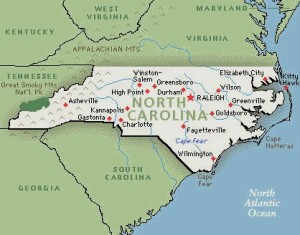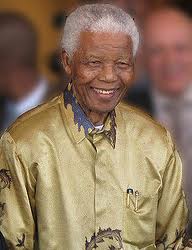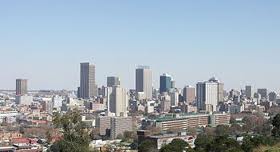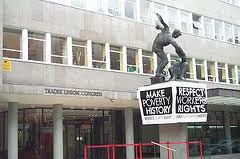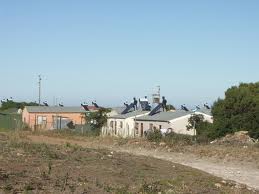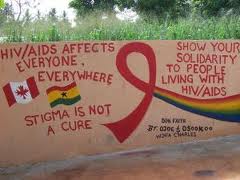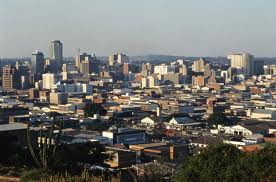
Harare – goafrica.about.com
Introduction (written 2008 – first published 2010)
A popular remedy for Africa’s predicament is the promotion of ‘civil society’. It is conventionally seen as a collection of various kinds of non-profit bodies separate from the state and business sector. It is framed within a consensual model of politics, and thus capable of working in ‘partnership’ with both state and business sectors in pursuit of common interests, particularly ‘development’ and ‘democracy’ [i]. Since the late 1970s donors sought substitutes for the state in the private sector. In the 1980s they discovered the virtues of the non-profit branch of this sector. They tasked older entities such as mission hospitals and newly-arrived non-governmental organisations (NGOs) with providing a range of services, from schooling and healthcare to small enterprise promotion, that were once considered responsibilities of the public sector.
Under their neoliberal paradigm, donors have tried to raise the nonprofit sector’s political status. Beyond service provision, its main task is to counter government power. Here civil society is cast as a hero, who routinely calls a villainous state to account. Yet this model of ‘civil society’ has evoked controversy. Questions have arisen about the effects of NGOs not only as substitute providers of basic services, but also as vehicles of public politics, effectively substituting for opposition political parties [ii]. A number of writers have called attention to ‘the obvious: that civil society is [largely] made up of international organisations’. Some argue that the whole concept of ‘civil society’ as promoted by outsiders does not match African sociological or political realities, and can ultimately weaken, rather than strengthen the power of common citizens. There are calls, in short, for a re-think.
Civil domains
How closely does the idea of civil society correspond to the ways Africans themselves go about their associational life and politics? How has it worked in the past? Can it foster robust citizenship in the future? At some times and places, answers to these questions have been affirmative. Where Africans could organize to transform the political order – the ending of minority rule in southern Africa being a major case in point – rights and collective self-esteem have advanced. In this stormy history, consensual politics of the conventional ‘civil society’ model are hard to detect. Hence the need for more realism. The concept of public space, as derived from the work on the foundations of democracy of the German philosopher Jürgen Habermas [iv], allows us not only to analyze players and issues at stake but also to pay attention to the history of the discourse in that space, which specifically is quite important in an African context with an authoritarian past, colonialism, and often Marxism-Leninism in the years behind.
Hence our preference for another conception of this public space, which we term the civil domain: A social realm or space apart from the state, familial bonds and for-profit firms, in which people associate together voluntarily to reproduce, promote or contest the character of social, cultural economic or political rules that concern them. Such a conception makes it possible to include other powers as well as a great variety of civil society players (including churches, trade unions, vernacular civil structures – like the sometimes powerful Chiefs in Zimbabwe – groups of intellectuals around universities and social movements).
Yet were this space to comprise the whole of what interests us, a glance at history would rapidly reveal its limitations. For where the interplay of global interests and national vulnerabilities has had the upper hand, the advance of public politics and citizenship has been halted or reversed. Coerced by or colluding with forces abroad, many African leaders have squandered public goods and public trust. Sovereign powers and surpluses have been transferred abroad, open political competition outlawed and space for active citizenship reduced to nothing. In much of Africa, public institutions have decayed. In some cases – Somalia, Congo, Sierra Leone – they have collapsed outright. Explaining why states fail is a complex and disputed matter. Many homegrown villains from Mengistu to Mobutu to Mugabe are blameworthy. But as powers over fundamental political and economic choices have shifted even further upward and outward, to Western-based entities that make the rules – donor agencies, bankers, investors and policy think-tanks – external factors loom very large indeed.
Power in African settings is commonly constructed and deployed in spheres far wider than civil domains: the state, the armed forces, enterprises and the media. These have external as well as domestic dimensions; in a continent where power is highly extraverted [v], relationships with foreign actors are commonly decisive. Hence when talking of governance, democracy, and respect for human rights it is important to keep in mind differing levels – global, national, regional and local – and the interplay among them.
Civil domains in the public arena
Habermas concluded that in the 18th and 19th century ‘real’ democracy developed in feudal Europe when independent public spaces (such as coffee houses, salons, reading rooms, the beginning of the independent press) emerged where issues at stake were debated, outside the influence of government structures. He argues that the independent media are also in the ‘public space’. Their importance lives on in the articles on freedom of speech, opinion, association, assembly, freedom of the media, now cornerstones of the Universal declaration of Human Rights.
Today in Africa public space is not necessarily confined to the media. In Angola, the churches provided a public space for a discourse of peace to emerge in times of war, as Comerford has compellingly argued [vi]. Yet the public space transcends national frontiers. In the case of Zimbabwe, it is internationalized. Much space is today found outside the country, in the diaspora in South Africa, U.K. and beyond. Here we can expand the ‘public space model’ beyond civil domains to embrace the ‘arena model’. A ‘public arena’ is a complex whole of ‘antagonistic cooperation’ [vii]. The scope of the ‘civil domain’ allows for conflict, but cannot account for its non-territorial, externalised dimensions. Those are of great importance in accounting for what is really going on in the complex African context.
The arena model allows analysis of the intrinsic power relations in day-to-day struggles. Power relations inside the different organisations figure in the arena model. Here organisations are seen as half-open systems interacting with other organisations in the context but at the same time being influenced by them, which works out differently for different layers in the organisations.
Conventional civil society notions do not draw attention to this. Let us take an example. A large non-governmental organisation in Zimbabwe is dependent on international donors. At the same time it operates in the Zimbabwean political reality where it is dependent on the Zimbabwean Government. It faces further challenges posed by its beneficiaries, in the field where things are really happening. But: these three are in fact different organisations! Although the whole NGO is affected by the decisions of its donors, these are decisions mainly carried out on the level of the directors and the managers: they are judged mainly based on the needs of their donors who are all abroad and influenced by other political realities than that of Zimbabwe, while the organisation’s field officers are dealing with the direct needs of the people: the organisation (as well as all others in the arena) is a half-open system. Its inner workings can be described as an arena, nested in the arenas of political reality in Zimbabwe but at the same time in the foreign aid system which in its turn is nested again in overall international relations systems.
This complex ‘nesting’ of arenas [viii] is an important part of the analytical model. International pressure cannot be omitted when analyzing Zimbabwe. This pressure is exerted on many levels. Simultaneously the organisation is a half-open system in the sense that the culture of the programme related officers inside the organisation is more geared towards the beneficiaries than that of the ‘Zimbabwe or international related’ managers and directors, while the organisation as a whole is more related to the beneficiaries than the Zimbabwean Government itself. At the same time all parties have a fragile relationship, based on conflict resolution and negotiation, and this relationship is reflected inside the organisation as well.
Thus in the organisation’s internal arenas, different players confront each other and may become interdependent [ix]. These are not in the ‘public arena’. But if they are not taken into account, any analysis would overlook many things that drive relations in the ‘public arena’ and hence the complex power plays that are going on. This is qualitate qua of course also the case with media outlets and political parties etc. So it is not enough to analyse ‘the’ organisation: an analysis needs to be deeper and more encompassing.
It is the public arena in which battles (cold or hot) are fought by various players and powers, resulting eventually in more democracy – or less.
Democracy and state responsiveness
Official aid agencies have expressed their dismay at ‘top-down’ approaches; they now claim to be paid-up members of the ‘participatory methods’ club. Yet in practice, those new methods have often camouflaged old-fashioned autocratic power. Donors continue attaching coercive conditions to their loans and grants. Aid-givers’ insistence on ‘participation’ in some places is experienced as manipulation, deception and unpaid local labour. Some now speak of the ‘tyranny of participation’, and discuss it only with adjectives: ‘veneered participation’ (going-through-the-motions); ‘inequitable participation’ (women and minorities marginalized), and ‘bureaucratic participation’ (planning-by-numbers, discussing-by-checklists)[x]
Some wish to drop the term participation altogether. Real citizenship is not served by cheap substitutes; rather it requires ‘teeth’ – concrete obligations and rights capable of being upheld in courts of law. Citizens should have real powers to ‘throw the rascals out’, but credible mechanisms (truly competitive elections, independent parliamentary inquires, independent public auditing) for downward accountability are scarce or weak.
In their approaches to the state in Africa, aid donors have shown ambivalence and mood swings. In the 1960s they favored the state and ‘nation-building’. By 1980 they had changed course, mounting an offensive to ‘roll back’ government through privatization, decentralization and de-legitimation of the public sector. Up to the mid-1990s, donors showed great optimism about the powers of private for-profit and non-profit sectors. This harmonized with prevailing neoliberal orthodoxies, namely that Greed is Good, and that horse-and-sparrow economics would be sufficient to tackle poverty – that is, ‘feed the horse well and some benefits are sure to pass through for the sparrows to eat’.
Where African governments poured public resources into such luxuries as four-star hotels and automobile assembly plants, cutting back state engagement in the economy was not a bad thing. But deligitimizing the public sector rapidly became a self-fulfilling prophecy. Schools, health services, police and other public sector services – especially those serving the politically weak – rapidly lost good staff and other means to meet citizen needs. Unable to deliver basic services of acceptable quality on a fair basis, and ravaged by corruption, the state lost legitimacy for citizens. Readiness to pay taxes and fees declined. The public sector lost whatever responsive character it may have had. The ‘social contract’ between states and citizens lost any meaning.
Donors and lenders sped up the decay of African public sectors simply by choosing to by-pass them. They channeled aid via special project units, consulting firms – and nonprofits. NGOs became aid vehicles of choice, and their supply both in the North and the South boomed in response to donor demand. The resulting organizational islands could deliver their agricultural extension, health care and training project services for a while. But disconnected from public institutions and local taxes and fees, those services stopped when the stream of aid dried up.
Institutional decay, combined with low and declining reciprocity between political classes and citizens, have made states dangerously fragile. There has been no lack of disaffected politicians or disgruntled army officers ready to spark a coup or a war. The sequel has collapsed, sometimes with unspeakable violence. Victims have been chiefly civilians. In the case of Rwanda, the system of foreign aid – including that helping to create ‘civil society’- set the stage for genocide [xi].
After 11 September 2001, strategists at the centre of world power began paying more attention to the periphery. People in supposedly secure Western countries have turned out to be vulnerable to the breakdown of public order and security in faraway non-Western places. Washington DC today regards weak and failed states as among its top security priorities. Its main development agencies are re-tooling themselves to promote ‘nation building’ – a theme of the 1960s. The task is no longer to shrink the state but to reshape it in ways assumed to secure Western interests.
That is not a bad idea. Contrary to some conventional thinking about civil society, stronger states can advance anti-poverty and human rights agendas. Weak and poorly institutionalized states hardly favour emancipatory associational life. But where there are robust public institutions to provide basic services and enable open politics, many things become possible. Citizen action in South Africa, for example, has scored victories for landless people and those living with HIV-AIDS because special courts and official commissions have grown (partially as a result of civil society pressures) to promote provisions of the Constitution’s bill of rights. In Mozambique, an important pre-condition for achievement of smallholder land rights was the rehabilitation of the public cadastre (land title office).
Charitable giving and government subsidies to NGOs are commonly justified by claims about their responsiveness in combating poverty. Indeed in many African settings, a lot seems to be happening: sewing circles, street children centres, HIV-AIDS counseling, kitchen garden and small livestock efforts, micro-lending, literacy, and many other instances of NGO intervention. Africa seems abuzz with little projects supported from abroad. But does this add up to anything people can count on? For many citizens such beehives of activity can be a ‘tyranny of structurelessness’ – a situation in which benefits are indeed flowing to some, but not according to any priorities or plans ratified by wide popular consent. Nonprofits claiming to be more responsive than the state in service provision seem to have a point when people flock to their clinics and schools. But in the absence of public steering and comprehensive coverage, overall outcomes can add up to fragmentation, instability, unequal access and no reliable ways for citizens to call service providers to account and get what they are entitled to.
Yet it appears that neither ‘building civil society’, nor ‘building the state’ are in themselves the answer to public issues. Rather, viable answers may be better sought in the ‘public arena’ where the question is not one of shrinking or developing substitutes for the state, but challenging it to become more responsive while at the same time helping it gain the capacities to respond.
In this framework an interesting study has been conducted in the Balkans [xii] where the authors ask themselves: ‘Why is economic growth not generating support for market capitalism and why is state weakness reproduced in the Balkans?’ Their study shows that economic growth is not sufficient to create a social base for a market society and that state building in the Balkans cannot and should not be simply reduced to an EU-guided reform of public administrations (both of which are assumptions underlying the actual discourse on ‘reconstruction’ of the Balkans, mainly driven by EU-forces.) The answer of the researchers in the Balkans is that state building should be viewed primarily as a constituency building. The paradigm shift proposed here (a shift from emphasis on the state to one on the constituency of the state, including different civil domains) is a virtual reversal of the neoliberal paradigm shift from state building to civil society.
As the authors of the Balkans study say:
What is needed is a new generation of democratization policies that focus on the quality of political representation. What we see as a priority is a shift from the normative approach to democratization that focuses on democratic institutions (elections, courts, and media) and which is most often expressed with the idea of ‘accountable government’ or ‘good government’ to the idea of ‘responsive government’ that underlines not the state’s autonomy from civil society but the influence of major social constituencies over state decisions
In our view that synthesizes the approaches we described in our theoretical notes: a concept of civil domains is more useful than that of civil society. But that in itself is not sufficient. For in the end it is all about the ‘balance of powers’ in the public arena. This nested constellation of public and private entities has non-territorial, global dimensions; in a place like Zimbabwe, where so many citizens are now ‘offshore’, it is a crucial concept. A functioning public arena is a precondition for a functioning state as well as functioning constituencies of that state. It makes responsiveness possible, as a first requisite for genuine democracy. To understand the actual situation in Zimbabwe, these mechanisms need to be better understood.
Part II. From model to practice – The public arena in Zimbabwe.
Which institutions, rules and incentives are driving or blocking change? Which ones are shaping the civil domain and public arena in today’s Zimbabwe? The following sections consider these questions on several terrains: economic and state-party (including military and justice, section 4); and the ‘civil domains’: church, civil, vernacular and the media (section 5). Section 6 offers concluding observations.
Zimbabwe’s public arena
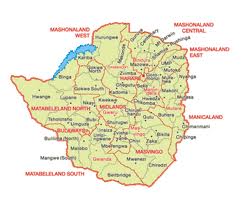 Economic power
Economic power
After independence in 1980 Zimbabwe started with one of the best regulated – be it settler-colonialist – regimes in Africa. It was then already a corporatist economic regime, but it worked, generating a relatively high per-capita income and a basis for extending social as well as economic infrastructure. The main sources of income were agriculture, mining and industry. In the first decade of independence the ZANU government effectively maintained this structure, adding important redistributive measures like a minimum wage, increasing expenditure on health and education [xiv]. The ruling party did not immediately begin to seek the maximum benefits for themselves out of the system; its rule could be described as ‘enlightened dictatorship’. For most Zimbabweans, welfare improved, especially in rural areas where agricultural output boomed.
However powerful outside interests, led by the World Bank and IMF, had concluded that Zimbabwe’s economy was underperforming. Therefore, like in the case of virtually every other African economy (never mind the differences) it had to be overhauled. The ensuing Economical Structural Adjustment Programme (ESAP) began in 1991. Six years later, the World Bank lauded the programme, bestowing on it the Bank’s highest rating: ‘highly satisfactory’. Yet as a World Bank senior economist, William Easterly, has recently noted, this coercively-imposed economic programme set Zimbabwe on the path to predatory capitalism and economic and political ruin [xv]. The massive wave of privatization and deregulation accelerated the creation of a class of politician-owners and well-connected business people whose main interest was in extracting rents, not building up enterprises. Hence the job creation boom promised by ESAP’s architects failed to materialize. Instead Zimbabwe saw worsening poverty and inequality. Salaried and wage-earning classes – the social bases of formal associational life – suffered grave setbacks. Some of these were caused by factors beyond the control of the regime (drought, collapsing commodity prices) but most stemmed from the logic of the programme and the interests of the class it empowered: lowered social sector spending, increases in military outlays, and especially moves to redistribute assets to a small elite. Clientelism grew and along with it, a ‘political economy of disorder’ [xvi].
Zimbabwe’s fall and those who pushed it into the abyss have been vividly documented [xvii]. Among others the study by Gunning and Oostendorp [xviii] shows how an over-rapid liberalization leads to grave accidents and poor outcomes, especially the explosive increase of poverty. This deterioration, and the emergence of protest toward the end of the 1990s, showed that the support for the ZANU regime was dwindling. Political decisions to maintain this support by all means (from large payments to war veterans in 1997 through land appropriation to outright violent repression after 2002) in order to keep power in the hands of the ruling ZANU elites did the rest. Land grabs, military plunder in the Congo, hyperinflation and the collapse of formal sector employment have led to radical impoverishment, public squalour and private accumulation in the hands of a tiny elite. Eighty percent of the people live below the poverty line and are in fact only kept alive by the remittances from the quarter of the 12 million inhabitants that fled the country….[xix]
Zimbabwe is one of the clearest examples of how political developments (international as well as national) impacted directly on economic policy formulas (corporatism in the 1980s and liberalism in the 1990s) thus backfiring to politics and the society as a whole again in the first decade of the 21st century. As Brett puts it: ‘… its continuing need to pay its political debts made it impossible for [the regime] to cut the budget deficit, and this … produced unsustainable threats to its ability to buy political support’ [xx]. It finally led to a rampant inflation, destroying most of what was left of the Zimbabwean economy.
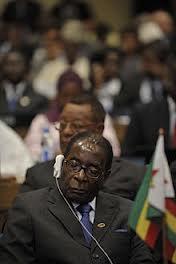
Mugabe – en.wikipedia.org
State and party power, military and justice
Up to the year 2000 Zimbabwe could still be considered a ‘one party elected state’ [xxi]: the power of the ruling party was overwhelming, but it was always more or less legitimized by elections, at least nominally. In February 2000 the ruling party decisively lost a national referendum on a new constitution; later it recouped its standing in the 2000 and 2005 parliamentary elections, the 2002 presidential election and the 2005 senate elections. At the time this chapter was being written in 2008, Zimbabwean politics had been on a roller-coaster ride taking citizens from orderly parliamentary and first-round presidential elections to a period of such intense violence that a second round of voting for president was effectively nullified.
A military junta operating behind the figure of an aging President today essentially runs Zimbabwe. The military has been purged of all possible sympathizers with any form of opposition. The military is thus a trustworthy base for the ruling party, for which it undertakes open and active propaganda. In 2002 the chief of staff solemnly declared that the army would not accept an electoral defeat of the ruling party. Ex-soldiers have been appointed to administer elections from voter registration to the announcement of election results. Militarization of the police and the systematic intimidation of magistrates to force their resignation and replacement by party men make the life of anyone who dares to oppose the ruling party a complete misery. If you are beaten up by the mobs (including a newly formed ‘youth league’) of the ZANU-PF, you cannot go to the police or if you do you’ll be beaten again (as happened to opposition leader Morgan Tsvangirai). When you lodge a complaint to the judiciary you will be arrested yourself, and so forth.
Thus Zimbabwean politics has evolved from a ‘one party elected state’ to a one party military dictatorship. Party members such as former Finance Minister Simba Makoni, who dare to challenge the candidature of Robert Mugabe inside the party quickly find themselves thrown out of the party.
Typology of civil domains in Zimbabwe
Vernacular ways of associating
Chiefs and spirit mediums hold considerable authority, especially in rural areas. Although often underestimated, they form powerful (sub-)elites that cannot be ignored. When Zimbabwe was colonized during the 19th and 20th century, black inhabitants were – as in so many colonies – pushed onto ‘communal lands’ and put under the supervision of ‘traditional’ leaders in fact appointed by the colonial authority. Despite the illegitimacy of their imposition, these chiefs formed the heart of colonial control over rural people and the lands allocated to them. Local cults were thriving (and often still are) in these areas: chiefs and spirit mediums form a ‘state in the state’ together representing vernacular power. Spirit mediums and chiefs played an important role in many areas in the guerilla war, ‘providing a mythic base for the alliance between the people and the guerillas’ [xxii], sometimes in happy alliance with the local Catholic missionaries. But in light of many chiefs’ active collaboration with the white minority regime, their formal role in land allocation after independence was taken over by the ruling party. Nevertheless inhabitants de facto went on to refer land matters to traditional leaders [xxiii].
Today, as central governmental performance deteriorates, local chiefs are again gaining influence.The ruling party’s authoritarianism is expressed in the power relations in the ‘communal areas’, which are often adjacent to commercial farms. The politics of ‘traditional’ leadership, here and there combined with ‘war veterans’ (a grouping in civil society revived around 1997 as a useful rent-a-mob in the service of the ruling party) thus helped drive a wave of violent takeovers of commercial farmland beginning in 2000.
But the power of the vernacular ‘systems’ is real power: in order to get permission to work a certain piece of land in the communal areas people must turn to the chief. Land is collectively owned, or in some places even totally appropriated by the chief. In that way a complicated political economical balance in the rural areas exists, where the chief holds the formal power, the spirit medium the religious and historical power, and the elected (sometimes MDC, not just ZANU) rural councilors hold the formal power, but where the executive power is divided between the ZANU party system and local NGOs, since the latter command (foreign) funding. Quite often a nightmare for a (subsistence) farmer in rural areas! [xxiv]
The churches
In Zimbabwe the churches have been divided for many years as far as their answer to the political crisis is concerned. Individuals like Archbishop Ncube of the Bulawayo diocese have been taking a stance against repression and in favour of the needs of the common people. Other church leaders (especially the Anglicans) are staunch supporters of the regime. All together the churches have been quite inert for a long time, since they withdrew when the ‘Movement for Democratic Change’, which was a genuine movement at the time of its inception, developed itself into a political party under Morgan Tsvangirai [xxv].
The Christian Alliance (CA) was formed in 2005 to formulate a joint strategy of the younger clergymen. When in 2005 the government launched a campaign of forced eviction of 700.000 shack dwellers (‘operation Murambatsvina’ meaning ‘throw out the rubbish’) the church response reflected growing civil preparedness to defend the people. At that time the churches led civil condemnations of government action and organised practical support for the evicted. These churches’ activities have intensified in recent years. Today the Christian Alliance is one of the ‘umbrella’ organizations trying to (re-)unite non-profit organizations. In 2006 they launched a ‘Save Zimbabwe’ campaign, a successor to the (older) civil society coalition ‘Crisis in Zimbabwe’. In this way, the church has again become a force of its own but also may be a powerful ally for other (civil society) activists.
Formal organisations
In 2000 ZANU-PF was rudely awakened from its slumber of political security when the government soundly lost a referendum to change the country’s constitution to give the president far more executive powers and to confiscate commercial (white-owned) land for black resettlement. Leading the opposition to these reforms was a predominantly black civil society organisation, the National Constitutional Assembly (NCA), which was itself an umbrella of several civil society organisations. It demanded reforms along lines of Western liberal and human rights. Shortly thereafter, a key NCA member, the Zimbabwe Congress of Trade Unions (ZCTU) with others seized the momentum and established a new political party – the Movement for Democratic Change (MDC). That development followed closely on the launch in 1999 of the Daily News – a privately owned daily newspaper that intended to promote public demands for a new democratic and human rights order. It rapidly became the prime communication vehicle of the MDC. For the first time, state-owned and controlled media faced serious challenges from a paper with extensive national distribution capacity. The Daily News helped MDC come close to winning the 2000 parliamentary election and the 2002 presidential election. Many believe that the MDC did indeed win these elections, but that government control and manipulation resulted in the rigging of the election, giving ZANU-PF a narrow victory in both instances. Both the Commonwealth and the SADC Parliamentary Forum found these elections to be substantially unfree and unfair [xxvi].
NGOs have tried to gain clout by working more closely together. Many NGO umbrellas and networks have sprung up. Examples include the formation of the Crisis Coalition – a grouping of about 250 Zimbabwean NGOs from all sectors, including the media sector. Both the NCA and the ZCTU also remain as strong forces for change in the country. From 2005 onward, these NGO groupings, plus churches and the MDC opposition, started combining their efforts in planning strategies towards the elections. They initiated new rounds of mass protests, court cases and other challenges to the dictatorship.
Action in this domain, however, never overcame a culture of personality-driven organisations and resulting in inter- and intra-organisational rivalries. These dynamics seriously destabilised the democratic struggle. Strategic unity of division and purpose is needed, and is frequently lacking. We could call this the ‘umbrella dilemma’: cooperation is necessary but over the last years in Zimbabwe cooperation became an end in itself. A main motivation was commonly to qualify for foreign donor support. The attraction of umbrella organisations for donors and for ambitious leaders is well known [xxvii], but the frequency of collapse and other negative outcomes would suggest that donors have yet to show much respect for lessons learned on this terrain of ‘civil society building’.
There are many formal NGOs in Zimbabwe, and almost as many umbrella organizations ‘uniting’ them. NGOs have been surveyed and critically described on many occasions as for example by Moyo, Makumbe and Raftopoulos [xxviii]. They conclude: ‘This has led to the pursuit of individualistic NGO survival strategies and power brokerage as instruments of NGO sustainability. The manipulation of this situation by some donors, government officials and NGO leaders has thus generated a hostile context for coordination. In this situation, the result has been that NGOs remain scattered in their development work, lacking an effective development strategy and lacking any significant influence on government policies’ [xxix]. NGOs range from simple, very local, (subsistence) farmer associations, through largely a-political service delivery organizations up to the ‘chattering class’ [xxx] formed by many human rights and political NGOs (including those in defense of media freedom etc.) and their umbrellas. A Zimbabwean lawyer lecturing in the Netherlands explained: ‘It’s not uncommon that once a leader loses office in an NGO he goes on to form another one. Unfortunately donors buy into their project proposal and consequently Zimbabwe has a lot of organizations doing the same things’ [xxxi].
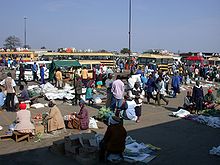
Masvingo Bus Terminus
Many Zimbabwean civilians are all too aware of the need for political change; they are mostly also willing to participate in it. Zimbabwean civil domains have witnessed what could be termed an overproduction of awareness, in no small part due to the interest and investments by donors, driven by the best intentions. But a result has been increased competition among NGOs in a shrinking political space, with resulting disappointing outcomes. In short, investments in civil society by donors lacking adequate knowledge of the public arena has had counterproductive effects in Zimbabwe. At the moment we see, to a great extent thanks to Western donors, civil society organizations de facto taking the place of political organizations that lack the legitimacy, knowledge and member-based structure of political parties.
Sarah Rich Dorman provides us with a ‘thick description’ of the Rise and Fall of ZimRights, a human rights NGO between 1992 and 2001 [xxxii]. She shows how a devastating growth rate (caused by overinvestment by donors) from two to forty staff members in seven years, combined with the politically volatile situation in which it operated, brought about the demise of the organization. The most courageous project of ZimRights was the systematic documentation of the ‘operation gukurahundi’, the slaughter of Matabeleland in 1982-83. The eventual publication of the book in 1999 was delayed for two years by internal infighting; ZimRights was a ‘half open organization’. The study details the organization’s evolution from a ‘volunteer’ to an employment base thanks to donor funding; its internal infighting between ‘big men’; its infiltration by the secret service CIO; its taking the brunt of government attacks; and its subsequent labeling as a ‘sell-out’ by the ruling party.
This case (and that of the Zimbabwe Election Support Network – ZESN, studied by the same author [xxxiii] are good illustrations of ‘operating in the public arena’. Studies of such things within a wider arena can avoid the common traps of over-praising or of rubbishing NGOs. By placing NGOs into wider terrains in which national and international forces are at work, such studies allow realistic understandings to develop. We hold in any case that staying with limited and often romanticizing narratives of ‘Civil Society’ is not a valid way forward.
Social movements
Zimbabwean resistance to settler takeovers in the 1890s was arguably the country’s first national socio-political movement in the modern era. Sixty years later, African nationalism crystallized in two rival political movements, pursuing much the same goal: an end to white minority domination. Led by intellectuals and a few trade unionists, those movements drew on and mobilized discontent in the countryside, including that expressed through vernacular religious groupings. Trade unions emerged in the 1920s under both local and foreign inspiration, but never posed serious threats to the colonial order, which had systematically repressed them and especially their attempts to associate with movements of political nationalism. As a result, Zimbabwe’s traditions of social movements as conventionally defined have been weaker than in neighbouring Zambia or South Africa.
In the post-independence period, claims by the ruling party over terrains of public action on the one hand, and NGO-ization on the other, tended to confine civic domains where social movements might have been expected to develop. The authorities moved to organize public action in rural areas through Village and Ward Development Committees; later something called the National Farmers’ Association of Zimbabwe emerged, but it represented a small fraction of the African farming population, mainly those using advanced technologies and possessing ample land. Something resembling a movement of the urban poor emerged in 1998 when the Zimbabwe Homeless Peoples Federation was founded. Based on a model developed in India and South Africa, this constellation of member-based organizations grew rapidly, supported by an NGO, Dialogue on Shelter. By 2003 it included about 50 thousand households in poor settlements on the edges of 27 Zimbabwean cities and towns. The Federation had carefully avoided taking party political positions, but was nevertheless one of the targets of the state violence unleashed against the urban poor in May 2005.
The media
‘The creation and sustaining of independent media is central to theories of democratisation. However, in the case of fragile states, it may also be misguided and potentially dangerous to assume that encouraging the creation of free and independent media will automatically strengthen civil society, or help establish a democratic system that will hold governments accountable. This approach underestimates the complexity of the contexts of fragile states’ [xxxiv]. Alas, Zimbabwe was not one of the case studies that have led to this report and the conclusions drawn from a workshop held in March 2005; it would have presented quite a challenge to categorise the Zimbabwean (Media) experience. For the sake of clarity, Zimbabwe does not fall under the definition of a ‘fragile state’; it deserves a category of its own. ‘Zimbabwe is ruled by the law’ is one of Robert Mugabe’s favourite phrases countering critics. And it is; if the media is too critical and if bombing and arresting journalists does not work, then you just change the law.
Following the reasoning of the authors of the abovementioned report, Zimbabwe is probably a ‘crisis state’ where legitimacy and (the lack of) responsiveness of the state has been challenged over and over again, by Civil Society and the Media. It made sense to support Zimbabwe’s mainstream media as it contributed to the building of a countervailing power in the struggle for the democratisation of Zimbabwe, specifically in the 1990s. There was a time when Zimbabwe held the promise for the future. Not only was it exporting food to the rest of the region; it was also successful in institutionalising democracy; indeed, there was a time when Zimbabwe was ruled by laws that had a broad consensus within society…
Soon after 2000 the continuous attacks on the private media started and journalism in Zimbabwe was on the defensive, engaged in dogfights with the state Media; uncovering official lies; trying to fence off the vicious misinformation campaigns and black-ops. And it never recovered from this. If there are lessons to be learned with regard to media development in Zimbabwe with the aim of strengthening democratic processes (which is not the same as following the ‘liberal agenda’) they probably lie in the field of taking a critical look at the kind of support that was rendered.
First of all most of the support went to the private print media. And although Zimbabwe held one of the highest literacy rates in Africa, the private print media never had the capacity to become mass media because of the limited distribution of newspapers and a reduced purchasing power of people in the marginalised neighbourhoods and outside the mayor cities. It could never comply with the right to information of the population and was not able to compete with the State (Broadcast) Media. This way the private print media had a reduced audience and was contained to the towns and upper echelons of civil society.
Secondly Media development was too narrowly defined. It did not sufficiently address or support other media outlets such as Community Communications projects (which were certainly existing in various forms in the country). Initiatives are being developed to get licenses for Community Radios, but it is an uphill struggle to get these licenses.
Other Radio initiatives such as The Voice of the People and Short Wave Africa suffer from serious financial constraints and Chinese-backed radio interference on the frequencies they are broadcasting on. But as well as ‘The Zimbabwean’ paper and several on-line publications these ‘offshore’ media illustrate the enormous potential of the Zimbabwean Diaspora: large part of the Zimbabwean public arena is based outside the country.
MISA’s [xxxv] campaign to transform State Media into Public Media is a strategic campaign on the longer term. Given the political landscape in Zimbabwe there is little chance the Mugabe government will accept such a transformation.
Zimbabwean civic domains and public arenas
ZANU-PF’s strategies in recent years are clearly geared towards taking control of all facets of society to ensure its political hegemony. Effectively, the separation of powers among the Executive, the Parliament and the Judiciary has been abolished except in formal appearance. The party has also extended its control over the civil domain including the non-state media, trade unions, human rights and development organisations, the business sector and the agricultural sector. ZANU-PF also controls the traditional chiefs: ‘They bought the chiefs, where that did not work they brought in the War Veterans (who were bought a few years ago with high pensions) and generally speaking they had over 25 years to establish a completely closed system of patronage, thus establishing a powerful military-party-state complex’ [xxxvi]. Continued support from the state (including all-important food support provided by international donors) to individual chiefs is dependent on the political loyalty of the chiefs including the loyalty of all persons who fall under the control of chiefs. The notorious youth brigades, enrolment into which is now compulsory for all school leavers and a condition of admission to tertiary education, are deployed in these villages (but also in townships). Their role is to observe and ensure that all villages and residents attend ZANU-PF meetings, obtain ZANU-PF cards, do not listen to or read any independent or ‘anti-government’ media, and to visit violence on those individuals who do not comply. These ‘examples’ also serve the purpose of warning others about their fate if they deviate from the party line [xxxvii].
Operating in such an environment is extremely difficult, heavily complicated as it is by its setting in the international arena, in which the Zimbabwean ruling party and its president Robert Mugabe managed to manipulate especially African public opinion against Western Governments (happily supported by the stupidities and undiplomatic behaviour of especially the British former colonisers).
Meanwhile African governments have their own reasons to back Mugabe. Recently Moeletsi Mbeki (South African entrepreneur and brother of President Thabo Mbeki) published an article about them: ‘short-sighted leadership, coupled with fear of emerging more democratic political forces in Zimbabwe’ (italics by the authors of this paper). Moeletsi Mbeki sees it in the light of political emancipation (‘African Renaissance’ in his view) in Zimbabwe: citizens ‘demanded a greater say in how their country was run’, they are interested in the ‘accountability of governance’. Here we meet the cry for responsiveness we described earlier in this paper. But unfortunately it is exactly because the majority of the actual ruling nationalist parties fears the new wave of democracy, of which the opposition in Zimbabwe (MDC, formed by the newly emancipated business, mass media, organised labour and civil society in general) is the very forebode for the whole of Southern Africa and is as such a new type of party. And that is the reason they are such fierce backers of the old guard, that beat the colonialists out of Africa, but thrives in the (neo-) colonial structures they inherited [xxxviii].
Inside Zimbabwe there is a paradox: the further the political-economical situation worsens, the more ‘impotent and demobilized the people directly effected become’ [xxxix]. Eldred Maunungurure (University of Zimbabwe) argues that the ‘fear thesis’ is not sufficient to explain this; he concludes that ‘reckless elites’, headed by President Robert Mugabe himself, are prepared to take any risk to oppress any form of opposition. Apart from the fact that over one third of the population (over three million mostly educated professionals) have now decided not to risk their lives and their families and have left the country for greener pastures, risk-averseness is according to Masunungurure now the predominant characteristic of the Zimbabwean masses, having been produced by three historical layers of authoritarianism: traditional political, settler colonial and commandist liberation war discourses and practices [xl].
All this does not make Zimbabwe into a ‘failed state’. It has indeed failed in delivering the most needed public goods to its constituency, but ‘it is far from failing with regard to the delivery of coercion’. He further argues that given this political culture it would be best to resort to decentralized, passive resistance, not confronting, but eroding the state. In this sense ‘stay-aways’ (e.g. from work), rent boycotts, etc. have been already more successful than street protests [xli].
Needed now are alternative strategies and donors who are willing to invest in them: from ‘guerilla media’ up to ‘local uprisings’ in order to erode the legitimacy of the actual state. The point is not to replace the state by civil society, but to make the state and its rulers accountable to their citizens. That will take a lot of time and effort; it will by no means be a ‘walk over’, given the enormous coercive apparatus of the same state.
 Conclusions
Conclusions
Can public ‘arenas’ be restored inside Zimbabwe? Current surviving (micro-)initiatives at community levels and with regard to the media offer no immediate prospects for rapid scaling-up, given the level of repression. But at least they have established precedents. The ‘public arena’ in Zimbabwe is far from being a reality, but is not an impossibility. Outside Zimbabwe in any case, in the diaspora in surrounding countries, USA and UK, as well on the Internet, the civil domain is lively, though not kicking enough.
Up until recently, elections appeared to be a way of claiming what little public space there is; but this is far from providing robust ways forward. Supporting organizations of the diasporas in UK, South Africa and elsewhere may have to suffice for the time being. Newspapers, websites and e-publishing flourish outside the country and are imported, becoming part of the public space; radio from London and SMS messages contribute further to public debate.
The public arena, though, has to be fought in Zimbabwe itself: to this end supporting links between the outside public space and the inside public arena deserve attention. Of course many funders (especially in the media, and funders of organizations like Crisis in Zimbabwe) are already doing these things: we hope to provide them with some more (theoretical) notions that can bring about new ideas and initiatives if worked out well with different (inside and outside) actors.
To sum up:
Zimbabwe illustrates the limitations of the conventional civil society story. NGOs are far newer and far less rooted and effective politically than are many institutions of vernacular associational life, and some large, established churches.
Being anchored in global flows and arrangements with powerful actors in (Southern) Africa, and therefore operating with no public accountability, the decisive institutions of power in Zimbabwe are beyond the reach of most citizens and their organisations. Furthermore, given the level of oppression by the regime and the level of control by the state of the vernacular and even some churches, a simple solution like ‘whom to support in order to get more leverage’ is hard to find: it will be a painstaking process, where sideways and internal discrepancies (the Simba Makoni factor?) need to be explored and exploited.
Investment in conventionally defined civil society, NGOs as independent agents of ‘countervailing power’ is in many cases still provided under terms (scale, duration, level, apolitical intent and disconnection to actual political processes) that make it incommensurate with the challenges. Initiatives like ‘Zimbabwe Watch’ in the Netherlands (where a group of donors tries to exchange views and align actions) may have contributed to public knowledge; these kinds of efforts should be brought to a world level, with more active following of the process, and more active adaptation of policies and investments: the ‘free for all’ mentality where new groups consisting of old players always seem to find new donors has done more harm than good.
In the end the heart of the matter is a responsive state: A functioning set of formal political institutions (constitution, openly and freely chosen political representations at all levels, an independent judiciary, independent powers of public inquiry etc.) certainly merits pursuit. Public space for associational life is also without question a good thing. But a responsive state, built around public services and the active pressure of their constituents (users and producers) to make them work well, seems to us to be an even more pressing and probably more feasible objective in the middle run. Therefore a chief priority for foreign support should be geared more and more towards those types of organisations which are actively enlarging public space and fighting in the public arena, as well as towards the means (e.g. media, communication) that de facto enlarge and protect the public domain.
We believe that the insight our approach allows into the interplay of various powers suggests pointers for future international politics in cases of self-destructive regimes. As this article was being prepared, developments in Zimbabwe took a dramatic course, possibly signalling the endgame for Mugabe and his cronies. The conceptual approach presented in this paper appears to be validated in that a solution to the crisis could not come from inside the country alone; rather, it had to be sought in the wider international arena, especially among Zimbabwe’s neighbouring African states. Now that mining is becoming a factor again improvements in corporate responsibility also regarding Zimbabwe will require confronting corporations in their global settings, where politics and governance are still weak and unresponsive to publics at large.
To go on supporting civil society (e.g. in providing services) as if nothing has happened, while the state is seriously weakened is a highly doubtful strategy. Aid in the future should be focused on restoring a responsive state, restoring the rule of law and other mechanisms that will restore and strengthen citizen-state reciprocity.
Support to civil society should aim to restore a balance in the public arena, to bring back a much needed public debate about the future of the country. Experience elsewhere suggests that vultures are ready to swoop at moments of regime change to advance their private interests in non-transparent ways. Open, public discussion is the main defense against new kinds of internationalised domination.
—–
About the Authors
David Sogge is a self-employed analyst on development cooperation, Bob van der Winden a self- employed organizational advisor and international cooperation consultant, both from Amsterdam, René Roemersma is coordinator of Worldcom foundation, working in theory and practice for communication in Development. This paper is based on a similar paper, Civil Domains in Angolan Settings, Published in Justino Pinto de Andrade and Nuno Vidal: Civil Society, Democracy and Human Rights in Angola (Luanda & Lisbon: Angolan Catholic University and University of Coimbra, 2008) and on Do not beat a drum with an axe, master’s thesis (2004) by Bob van der Winden.
Notes
i. See Howell, J. and Pearce, J. (2001) Civil society & development. A critical exploration, London: Lynne Rienner.
ii.See for example: Langohr, V. (2004) Too much civil society, too little politics, Comparative Politics, 36(2): 181-200.
iii.Guyer, J. (1994) The spatial dimensions of civil society in Africa: An anthropologist looks at Nigeria, in J.W. Harbeson, D. Rothchild and N. Chazan (eds.), Civil society and the state in Africa, Boulder: Lynne Rienner, p. 223, cited in J. Ferguson (2007) Power topographies, in D. Nugent and J. Vincent (eds.) A companion to the anthropology of politics, Oxford: Blackwell, p. 390.
iv.Habermas, J. (1989) The structural transformation of the public sphere, Cambridge, Mass.: MIT Press.
v.Bayart, J.-F. (1999) Africa in the world: A history of extraversion, African Affairs, 99(395).
vi.Doctoral thesis (2003) as well as: Comerford, M. (2005) The peaceful face of Angola, Luanda, p. xxiii. See also: Monga, C. (1997) Eight problems with African politics, Journal of democracy, 9(3): 156-70, cited in Comerford (2005) and Habermas, J. (1989) The structural transformation of the public sphere, Cambridge, Mass.: MIT Press.
vii. Verweel, P. (2002) Bewogen en gewogen: The power and weakness of vision and division, Lecture for Forum, Utrecht, the Netherlands.
viii. Antonissen, A. and Boessenkool, J. (1998) Betekenissen van besturen, Utrecht: ISOR, p. 208.
ix. Verweel, P. (2000) Betekenisgeving in organisatiestudies, Inaugural lecture, University of Utrecht.
x. Heeks, R. (1999) The tyranny of participation in information systems: Learning from development projects, IDPM, University of Manchester.
xi. Uvin, P. (1998) Aiding violence. The development enterprise in Rwanda, West Hartford: Kumarian. This important and surprisingly neglected study by a Belgian political scientist includes a devastating analysis in the chapter ‘And where was civil society?’.
xii. Center for policy studies (Central European University) (2003) In search of responsive government, Budapest.
xiii. Center for policy studies (2003) In search of responsive government, Budapest, p. 52.
xiv. Brett, E.A. (2005) From corporatism to liberalization in Zimbabwe, International Political Science Review, IPSA, Sage
xv. Easterly, W. (2007) The ideology of development, Foreignpolicy.com.
xvi.Chabal, P. and Daloz, J-P. (1999) Africa works. Disorder as political instrument, Oxford: James Currey.
xvii. Bond, P. and Manyanya, M. (2002) Zimbabwe’s plunge, London: Merlin Press.
xviii. Gunning, J.W. and Oostendorp, R. (2002) Industrial change in Africa, Zimbabwean firms under structural adjustment, London: Palgrave.
xix. International Crisis Group (2007) Zimbabwe: A regional solution?
xx. Brett, E.A. (2005) From corporatism to liberalization in Zimbabwe, International Political Science Review, IPSA, Sage, p. 102.
xxi.Minnie, J. (2005) Outside the ballot box, an introduction, in Outside the ballot box, preconditions for elections in Southern Africa 2004/2005, Windhoek: MISA.
xxii. Maxwell, D. (1999) Christians and chiefs in Zimbabwe, Westport CT.
xxiii. Shungudzapera, P. (2001) The politics of land, Acquisition and struggles over land in the ‘communal’ areas of Zimbabwe Africa.
xxiv. Do not beat a drum with an axe, master’s thesis (2004) by Bob van der Winden.
xxv. Raftopoulos, B. and Alexander, K. (2006) Reflections on democratic politics in Zimbabwe, Cape Town: Institute for Justice and Reconciliation.
xxvi.Matlosa, K., Uukunde, P. and Roemersma, R. (2004) Pre-Conditions for Elections Programme for Southern Africa (PEPSA): Feasibility and implementation framework.
xxvii. Biekart, K. (1999) The politics of civil society building. European private aid agencies and democratic transitions in Central America, Utrecht: International Books.
xxviii.Moyo, S. Makumbe, J. and Raftopoulos B. (2000) NGOs, the state and politics in Zimbabwe, Harare: Sapes Books.
xxix. Ibid.: 130.
xxx. Thanks to Andrew Moyse, director of Media Monitoring Project Zimbabwe, MMPZ
xxxi. Magaisa, A.T. (2006) A nation in dire straits. Law, politics and the crisis in Zimbabwe, The Inaugural Annual Basker Vashee Memorial Lecture, 8 June 2006, Amsterdam.
xxxii. Dorman, S.R. (2005) Democrats and donors: Studying democratisation in Africa, in T. Kelsall and J. Igoe (eds.) Between a rock and a hard place, African NGOs, donors and the state, Carolina Academic Press.
xxxiii. Dorman, S.R. (2005) ‘Make sure they count nicely this time’: The politics of elections and election-observing in Zimbabwe, Commonwealth and Comparative Politics, 43(June).
xxxiv. Van der Zwan, J. (2006), in Why templates for media development do not work in crisis states, http://www.crisisstates.com/download/publicity/crisis_report_low.res.pdf.
xxxv. Media Institute of Southern Africa, especially the Zimbabwe Chapter.
xxxvi. Interview with chairman of the Teachers Union, by Bob van der Winden.
xxxvii. See: Matlosa, K., Uukunde, P. and Roemersma, R. (2004) Pre-Conditions for Elections Programme for Southern Africa (PEPSA): Feasibility an Implementation Framework.
xxxviii. Mbeki, M. (2008) ‘Why SADC leaders keep backing Mugabe’, Sunday Tribune, 17 February.
xxxix. Masunungurure, E. (2006) ‘Why Zimbabweans do not rebel’, Zimonline opinion, 22 September. Masunungurure is Chairman of the Department of Political and Administrative studies at the University of Zimbabwe.
xxxx. See also: Melber, H. (2006) Liberation movements as governments: The unfinished business of decolonisation, in Outside the ballot Box 2005/6, Windhoek: MISA.
xxxxi. Masunungurure, E. (2006) ‘Why Zimbabweans do not rebel, part 2’, Zimonline opinion, 28 September.
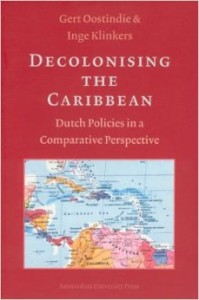 For over two centuries much of the Caribbean has been embroiled in heated,and initially violent, decolonisation. One may well date the beginnings of the process to the first recorded retreats of European colonisers, the conclusion of the eighteenth century peace treaties between the British and the Maroons of Jamaica, and then between the Dutch and the Maroons of Suriname – struggles for freedom which were, however, inconsequential in post-colonial history. So, Caribbean decolonisation formally began with the 1791 Haitian Revolution. With this seminal event came the dawning of a new era. Constitutional sovereignty was subsequently secured by the Dominican Republic (1844) and at the start of the twentieth century by Cuba (1901). Both were late in securing sovereignty by Latin American standards.
For over two centuries much of the Caribbean has been embroiled in heated,and initially violent, decolonisation. One may well date the beginnings of the process to the first recorded retreats of European colonisers, the conclusion of the eighteenth century peace treaties between the British and the Maroons of Jamaica, and then between the Dutch and the Maroons of Suriname – struggles for freedom which were, however, inconsequential in post-colonial history. So, Caribbean decolonisation formally began with the 1791 Haitian Revolution. With this seminal event came the dawning of a new era. Constitutional sovereignty was subsequently secured by the Dominican Republic (1844) and at the start of the twentieth century by Cuba (1901). Both were late in securing sovereignty by Latin American standards.